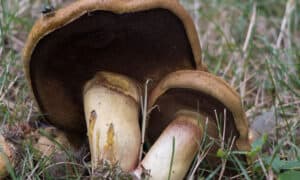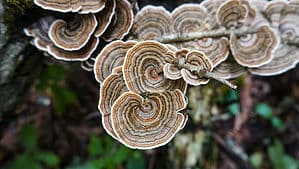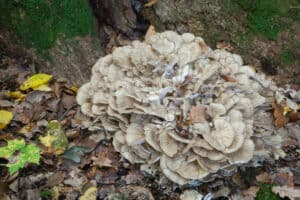While we can’t go over every single different type of mushroom that’s growing out there in the world currently, we can give you a list of some of the most common and interesting toadstools. Fungi grow in a variety of conditions, from simple to complicated. With prevalence in cuisine, media, and medicine, mushrooms have an exciting history and come in many forms.
In this article, we’ll go over a brief list of some of the different types of mushrooms, including poisonous and edible species. Let’s talk about some of these different mushroom types before diving into our list of some of the different types of mushrooms! Let’s get started now.
How Many Different Types of Mushrooms Are There?
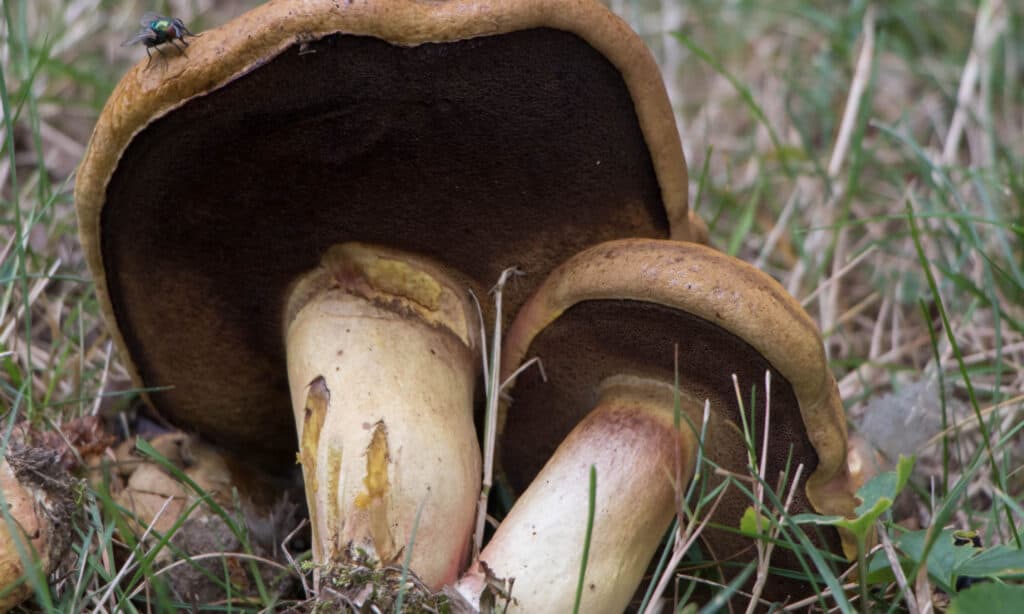
With prevalence in cuisine, media, and medicine, mushrooms have an exciting history and come in many forms.
©Allen Bradford/Shutterstock.com
©Allen Bradford/Shutterstock.com
With hundreds of new fungi species being discovered each and every year, it shouldn’t be surprising to hear that there are over 10,000 different types of mushrooms in North America alone. In fact, we have only properly described and cataloged 5-10% of fungi species worldwide. There are countless mushrooms found around the world and in a variety of environments and ecosystems. There are edible species, many that aren’t worth eating but are not toxic, some toxic ones, even some deadly ones; some are bioluminescent and some simply smell really bad.
Some of the most common mushroom orders include:
- Agaricales
- Boletales
- Pezizales
- Polyporales
- Russulales
- Cantharellales
Again, there are a dizzying amount of different types of mushrooms; this hardly scratches the surface. While poisonous mushrooms should be avoided, there are a great number of edible and delicious culinary mushrooms to consider. Just make sure you only eat mushrooms from your local grocer or that you forage with an expert mushroom hunter!
15+ Different Types of Mushrooms
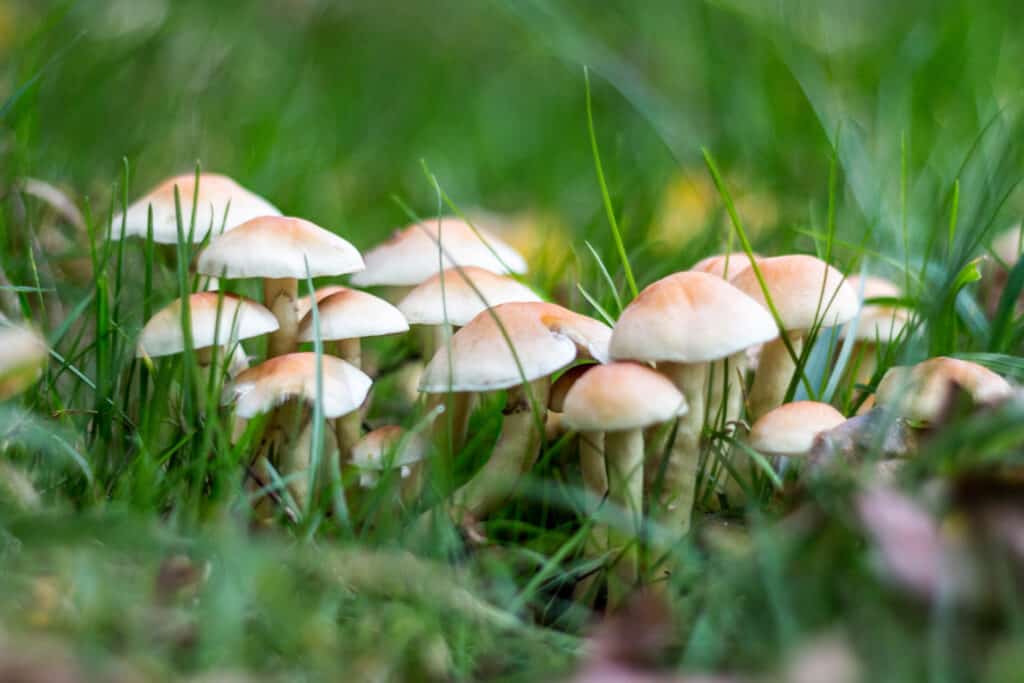
While poisonous mushrooms should be avoided, there are a great number of edible and delicious culinary mushrooms to consider.
©iStock.com/Dan Fog Madsen
©iStock.com/Dan Fog Madsen
Curious to learn more about the wild and mystical world of fungi? Here are more than a dozen different types of mushrooms, including the deadly and delicious!
Edible Mushrooms
Morels
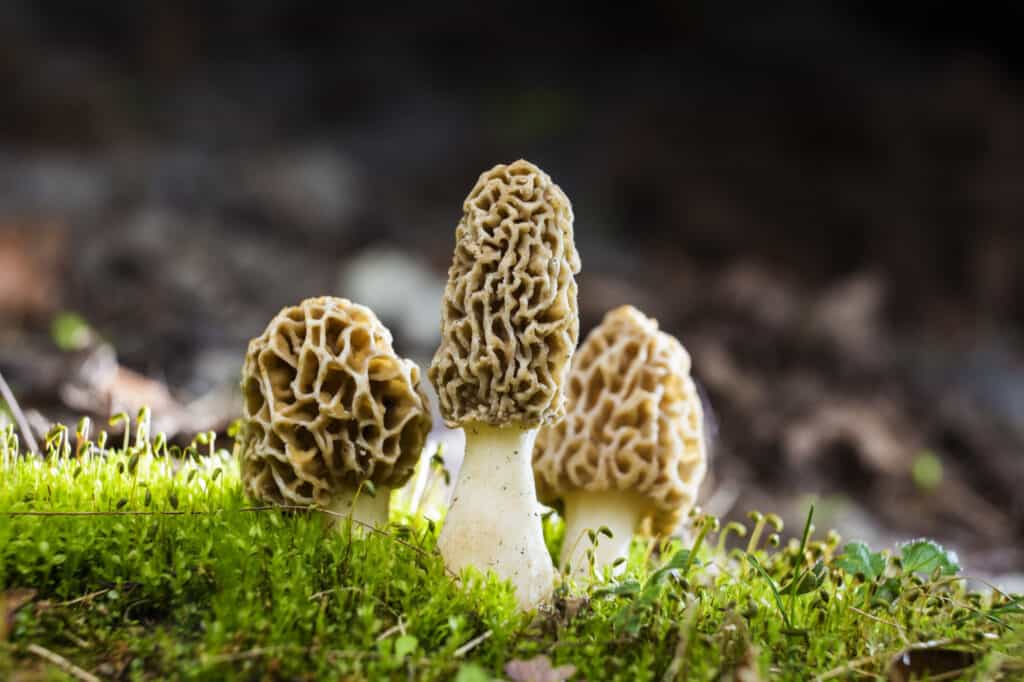
Prized for their flavor, morels must be cooked before eating.
©Mircea Costina/Shutterstock.com
©Mircea Costina/Shutterstock.com
Some of the most prized mushrooms on the planet have to be morel mushrooms. Commonly classified as members of the Pezizales order, morels make up hundreds of millions of dollars in the fungi industry given their prized culinary status. One of the most popular morel species in the US is Morchella americana, while Morchella esculenta is popular elsewhere.
Only in the recent past have morels been manufactured commercially rather than harvested in a natural environment. Morels struggle to grow in a sterilized setting, often forming symbiotic relationships with the ecosystem around them. Learning how to grow them commercially will mean a lower price tag if you want to try cooking with morels in your own home, but most attempts are largely unsuccessful.
Oyster Mushrooms
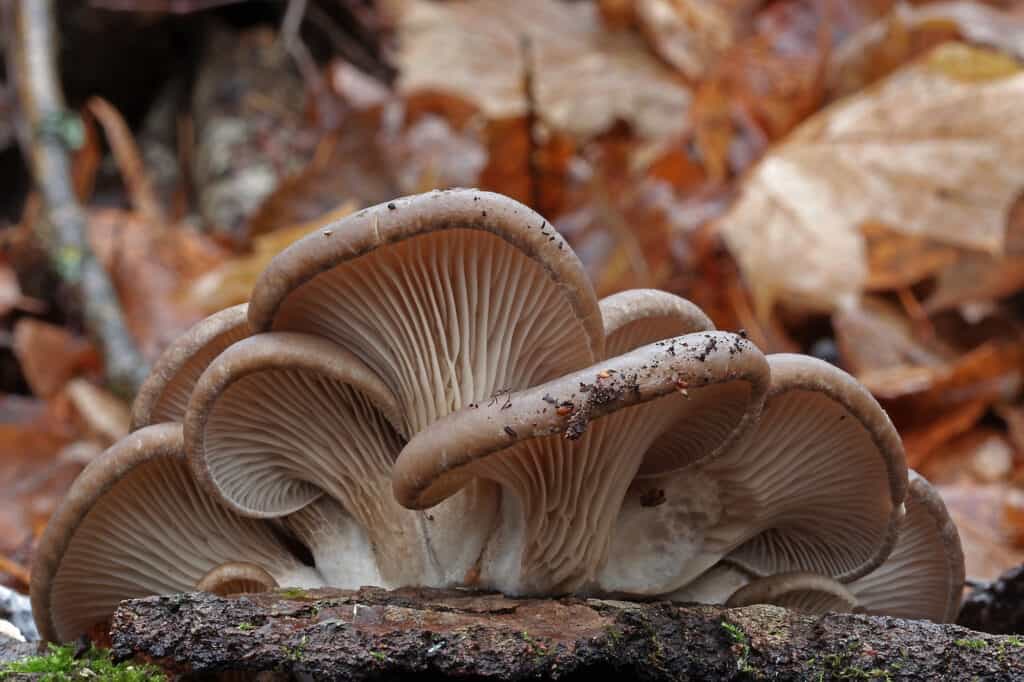
The clustered fashion that oyster mushrooms grow in may help with identification.
©NK-55/Shutterstock.com
©NK-55/Shutterstock.com
Belonging to the Agaricales order, oyster mushrooms are a must-try if you are looking for a new culinary mushroom to add to your kitchen. These clustered and gilled fungi are some of the most common specialty mushrooms ever cultivated. They are delicate enough to shred, making them an excellent texture for a number of dishes!
Boletes
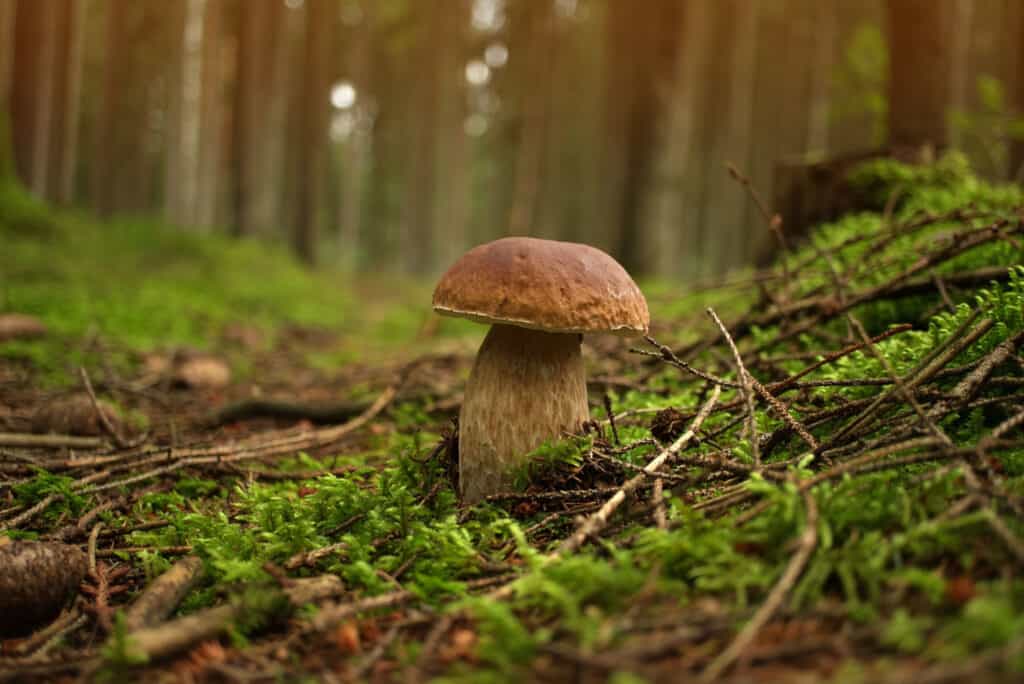
There are a number of different edible bolete species.
©NetPix/Shutterstock.com
©NetPix/Shutterstock.com
Another prized culinary mushroom has to be the bolete mushroom. Belonging to the Boletales order, boletes are a great type of mushroom to consider hunting for initially, though you should still take your time identifying these tasty caps. While some boletes are delicious and easy to identify, a great deal more are tricky to ID and may even be toxic. When properly harvested and identified, the Boletus genus has a few notable species worth consuming, including B. edulis, B. barrowsii, and B. pinophilus.
Chanterelles
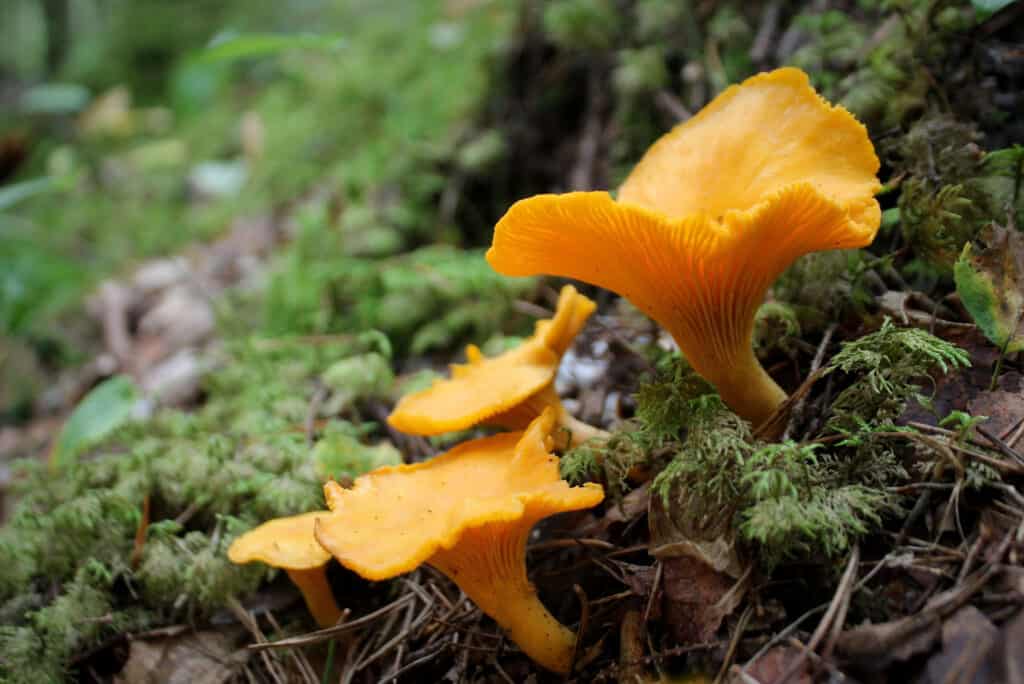
The golden color of chanterelles is mimicked by other non-edible mushroom species.
©Paula Savelius/Shutterstock.com
©Paula Savelius/Shutterstock.com
Almost as delicious as morels, chanterelles are edible and typically golden, red, blue, or occasionally white in color. There are a few different genera of fungi that have chanterelle species, including the Cantharellales order. Rather than having gills, many chanterelle species have uniquely folded undersides, giving them an artistic and fluid appearance. However, some are also smooth underneath, with flat and fanned-out caps. They can also have a bowl or cup shape to their caps and their flavor is uniquely fruity and peppery, making them delicious in just about any dish!
Porcini Mushrooms
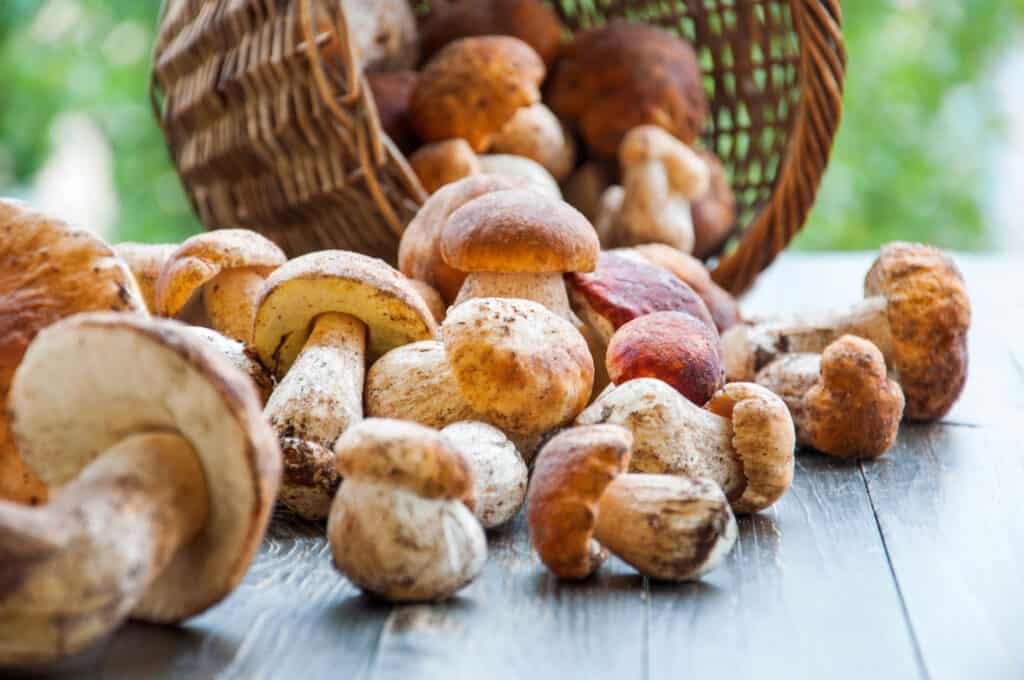
One of the most common mushrooms used in risotto is the porcini mushroom.
©All for you friend/Shutterstock.com
©All for you friend/Shutterstock.com
Technically a bolete mushroom and mentioned above (Boletus edulis), porcini mushrooms are a mushroom name you might recognize. Delicious and versatile, porcini mushrooms are one of the most common mushroom varieties used for risotto. Similar to morels, porcinis are difficult to grow in a sterile, commercial setting, which makes the wild harvest of porcini mushrooms key in areas where they grow well, such as Europe and North America.
Enoki Mushrooms
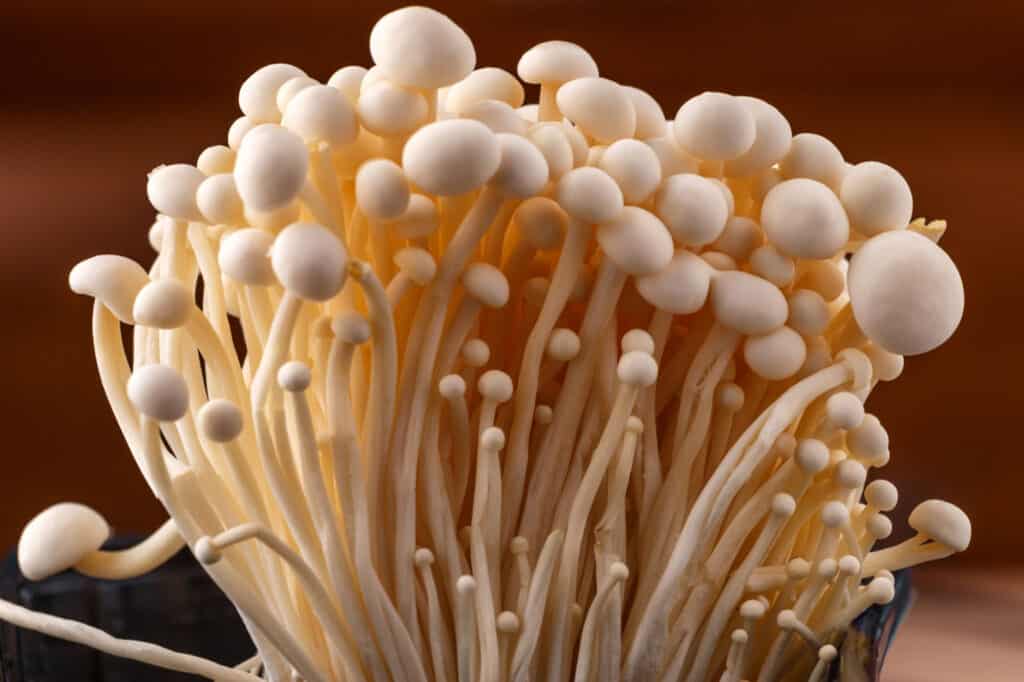
Edible and tiny, enoki mushrooms have a delightfully crisp texture.
©Tamakhin Mykhailo/Shutterstock.com
©Tamakhin Mykhailo/Shutterstock.com
Growing in large clusters, Flammulina filiformis is commonly known in the culinary world as the enoki mushroom. Native to Japan, China, and Korea, enoki mushrooms are small, narrow fungi with a uniquely crisp texture. They are fairly easy to cultivate indoors or commercially and commonly eaten in soups or other Asian dishes. You can also forage for Flammulina velutipes in Europe and North America if you want a wild-grown and gorgeous member of the Flammulina genus!
Puffball Mushrooms
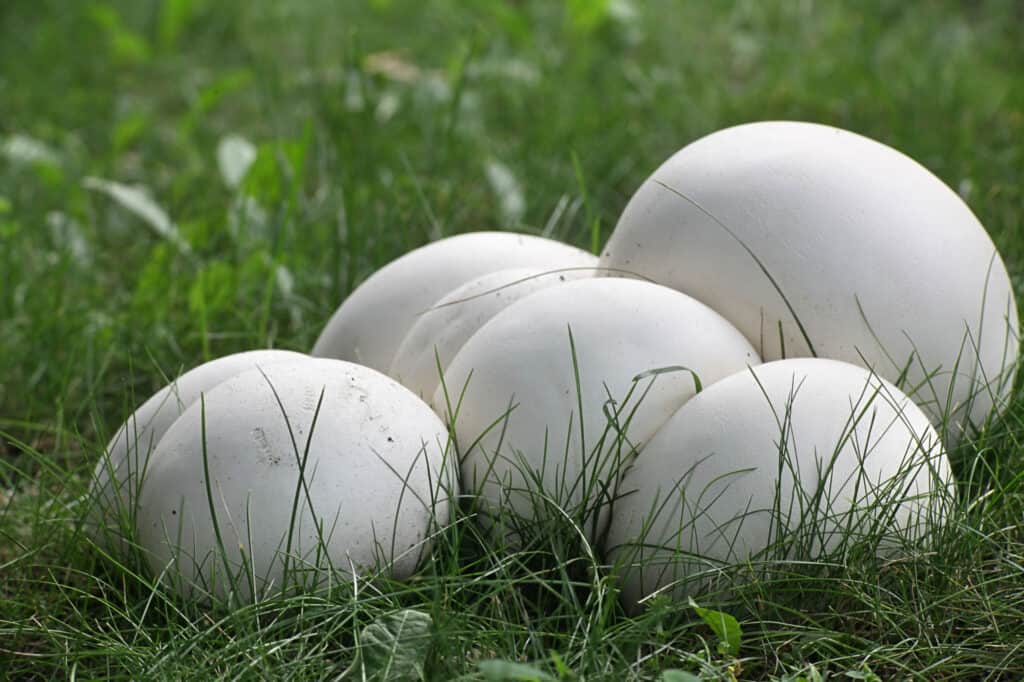
Most giant puffball mushrooms don’t taste like much, so they play well with other flavors.
©Henri Koskinen/Shutterstock.com
©Henri Koskinen/Shutterstock.com
There are multiple types of puffball mushrooms across a variety of genera. However, you can distinguish certain puffball mushrooms from the way that they behave, erupting in a puff of spores if disturbed. While it may seem strange, some species of puffball mushrooms are edible, including the giant puffball. Members of the Calvatia genus, giant puffball mushrooms can reach huge sizes and they don’t taste like much, making them mostly underutilized in the culinary world.
Button Mushrooms
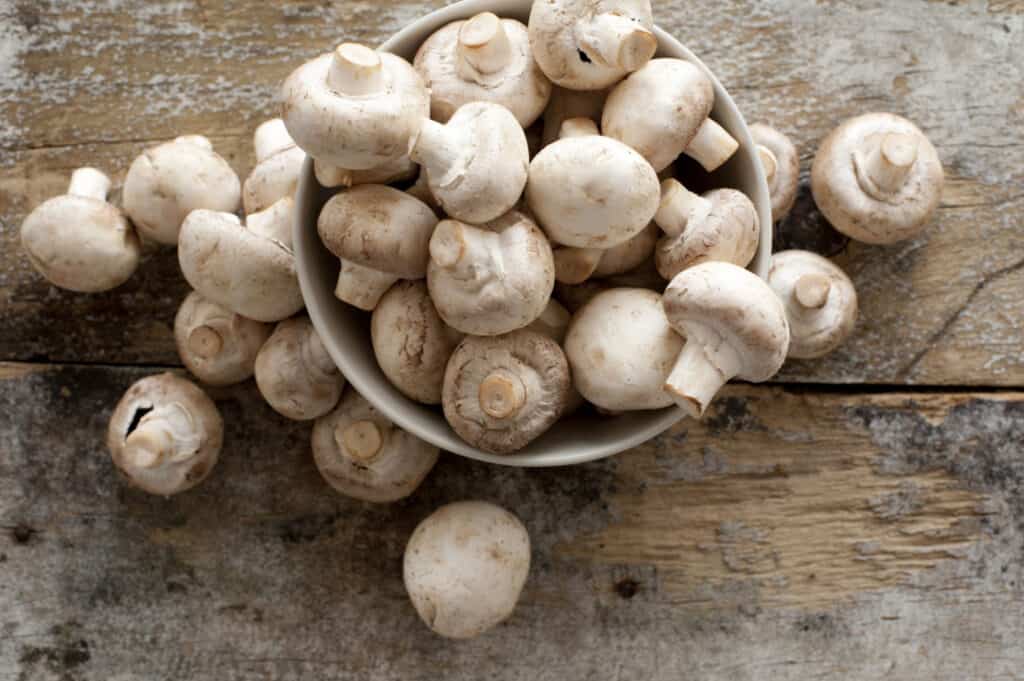
The most common culinary mushroom has to be the button mushroom.
©Stephen Gibson/Shutterstock.com
©Stephen Gibson/Shutterstock.com
Referred to as common mushrooms, button mushrooms are the number one mushroom sold in North America. Scientifically classified as Agaricus bisporus, button mushrooms are typically white or brown in color. They have rounded caps and a fairly neutral flavor, making them ideal in a variety of recipes and culinary situations. They are also called baby bellas and crimini mushrooms, depending on their age and color.
Shiitake Mushrooms
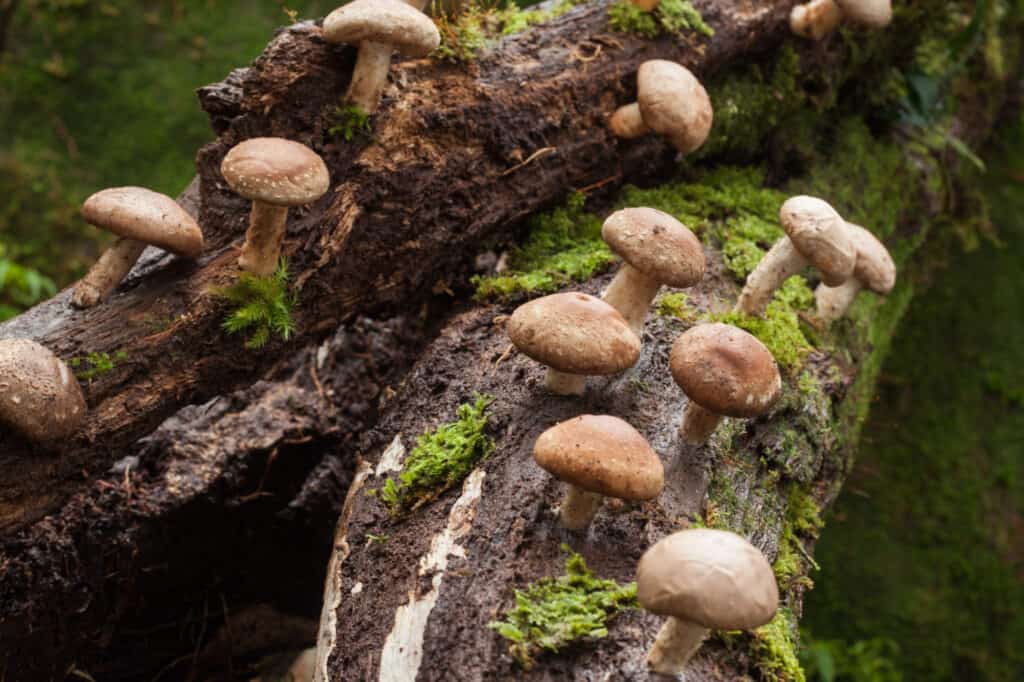
Most shitake mushrooms are sold dried or fresh.
©puttography/Shutterstock.com
©puttography/Shutterstock.com
Documented as an edible mushroom as early as the 1200s, shiitake mushrooms are delicious and extremely popular. Commonly eaten in a variety of Asian cuisines, you can find shiitake mushrooms dried or fresh. They are members of the Agaricales order and classified as Lentinula edodes, and you should be able to readily find these mushrooms in any grocery store!
Poisonous Mushrooms
Destroying Angels
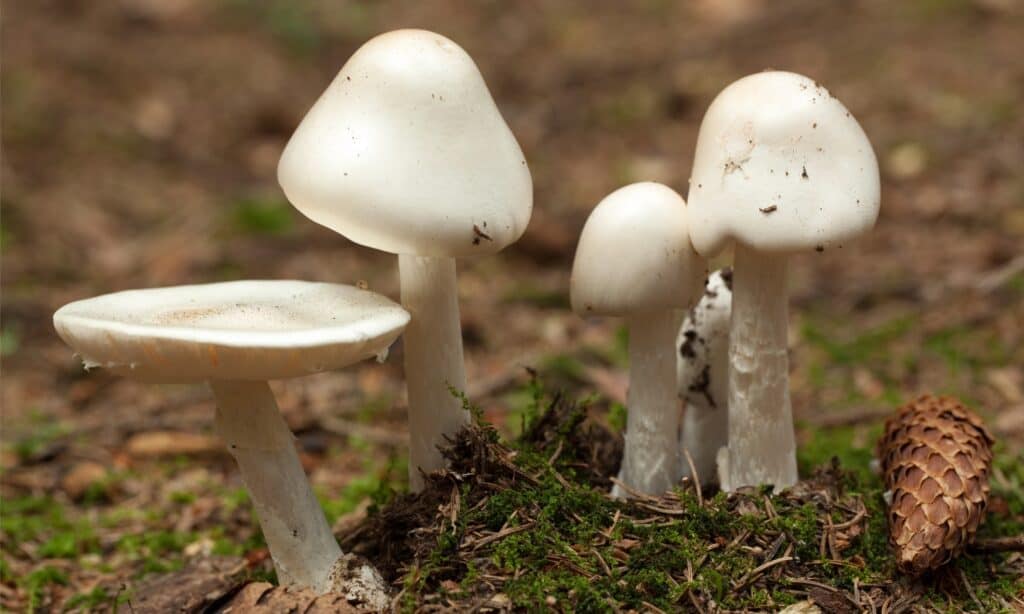
There are many different species of the highly poisonous destroying angel mushroom.
©iStock.com/dabjola
©iStock.com/dabjola
Full of amatoxins and members of the Agaricales order, the destroying angels are mushrooms that are aptly named: they are poisonous and can be deadly when consumed. The name “destroying angels” actually applies to a few different mushroom species. Depending on where you live, you may be dealing with Amanita bisporigera, A. ocreata, or A. virosa if you are in Europe. However, nearly all destroying angel mushrooms are pure white from their caps to their stalks, giving you some key for identifying them!
Death Caps
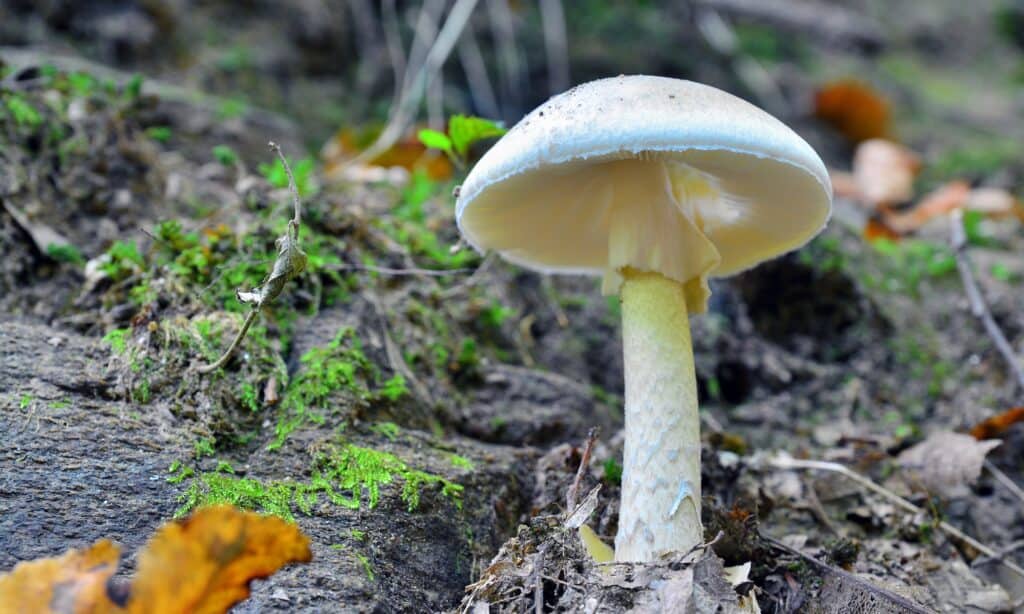
The death cap mushroom is often considered to be the most poisonous mushroom in the world.
©iStock.com/empire331
©iStock.com/empire331
The genus Amanita contains some of the most poisonous mushroom species in the world, including the notorious death cap mushroom. While there are some Amanitas that are edible, we do not advise venturing into this realm. This mushroom is Agaricales order and it can be a bit confusing, especially considering this order also contains plenty of edible mushrooms! There are a few different mushrooms referred to as death caps, depending on where you live. However, the most common and deadly species around has to be the Amanita phalloides. With a greenish hue, the death cap can cause death in fully grown adults if you consume as little as half a cap!
Russulas
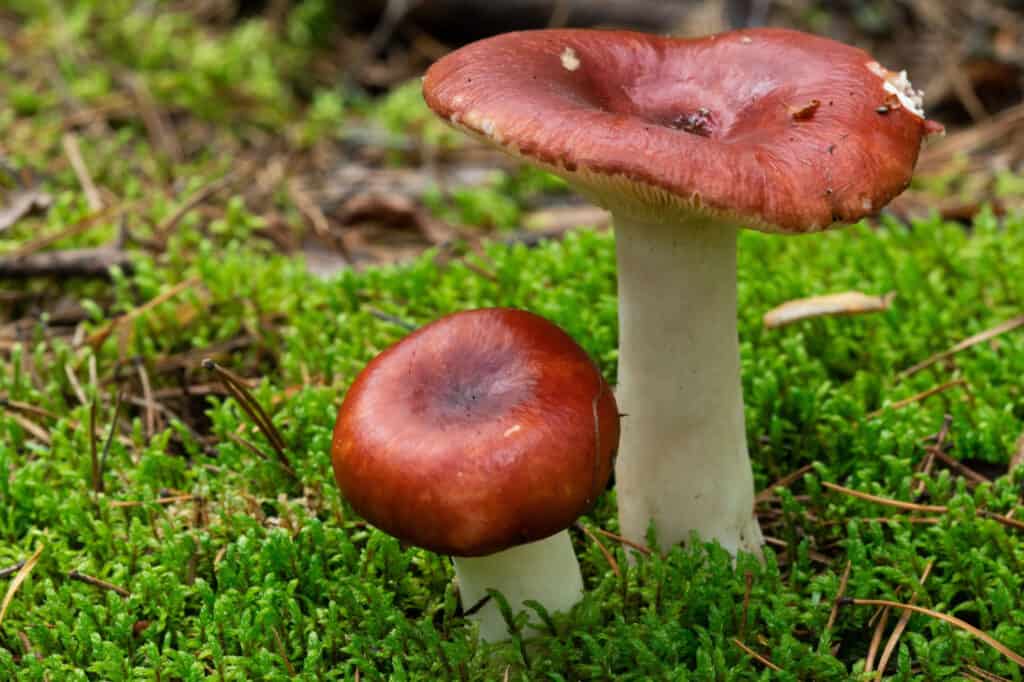
There are over 700 different types of russula mushrooms.
©Aleksandrkozak/Shutterstock.com
©Aleksandrkozak/Shutterstock.com
Making up over 700 different species, the Russula mushroom genus contains edible and poisonous varieties. With brightly colored caps and large gilled characteristics, you may think that identifying Russula mushrooms is a good place to start if you want to become an expert forager. However, many Russula mushrooms are unidentifiable unless you have a microscope and expert enough knowledge to perform DNA sequencing!
False Morels
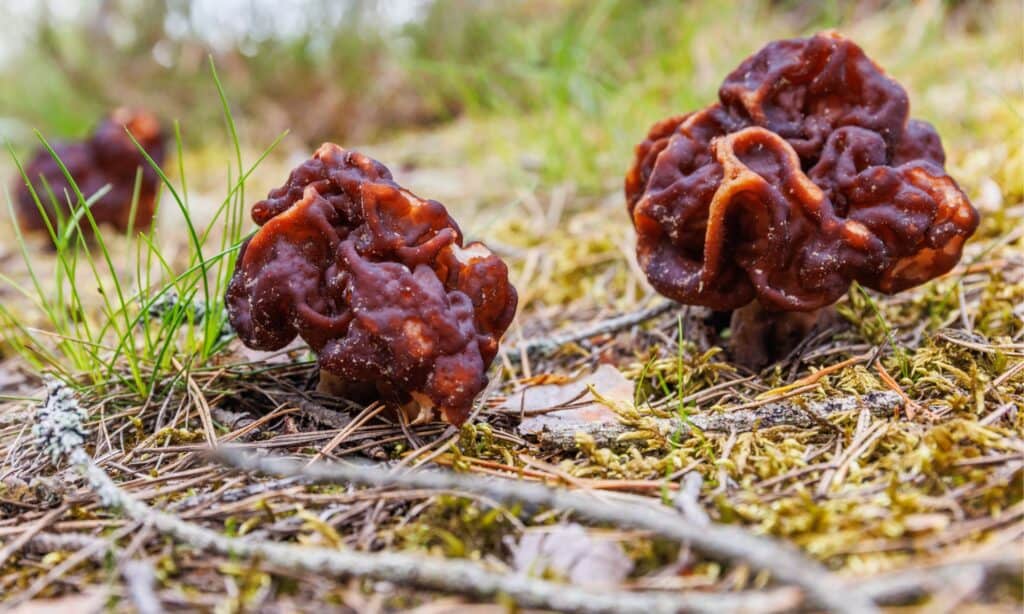
There are different types of false morels found around the world.
©iStock.com/TT
©iStock.com/TT
Not to be confused with proper morels, false morels are classified in the Pezizales order but are more specifically members of the Gyromitra genus. These fungi may be distantly related to true morels but take care- false morels can cause gastrointestinal issues and even a coma when mistaken for true morels. Species such as Gyromitra esculenta are found throughout North America and Europe.
Jack-o’-Lantern Mushrooms
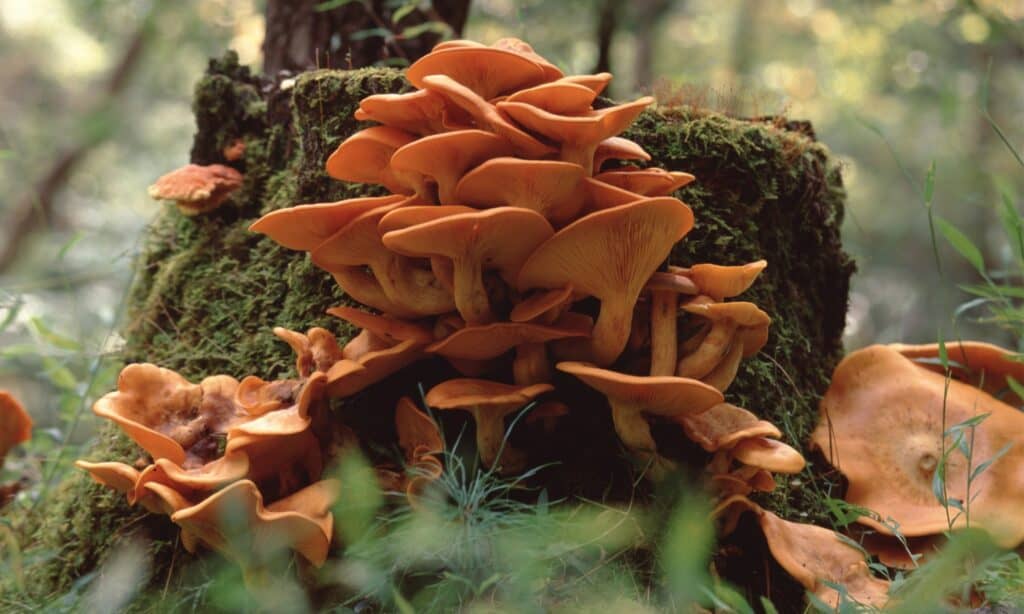
Found in a variety of places, jack-o’lantern mushrooms resemble chanterelles.
©iStock.com/Weber
©iStock.com/Weber
There are a few different species of Jack-o’-lantern mushrooms, subtly different depending on where you live. However, all are members of the Omphalotus genus, also from the Agaricales order. These mushrooms are most often confused with prized chanterelle mushrooms, and you can no doubt see why. All Jack-o’-lantern mushrooms are poisonous and can cause severe intestinal upset if consumed.
Webcaps
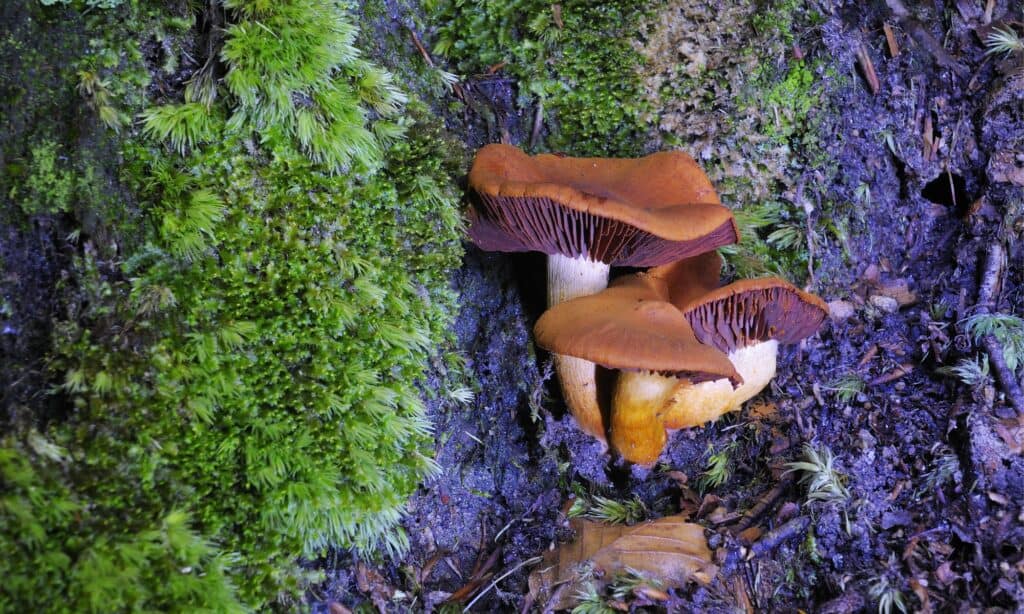
Most fool’s webcaps are members of the Agaricales order.
©iStock.com/Marcobarone
©iStock.com/Marcobarone
Yet another member of the Agaricales order, webcap mushrooms go by a variety of names. The genus Cortinarius contains approximately 2000 species a few being extremely toxic and only a couple of them considered edible(and with caution). Some toxic species such as the fool’s webcap (Cortinarius orellanus) and the deadly webcap (Cortinarius rubellus) are extremely poisonous, as their names imply. Thankfully, most mushrooms in the Cortinariaceae family don’t look like edible wild mushrooms, so it’s unlikely that you’ll improperly identify one!
Fly Agarics
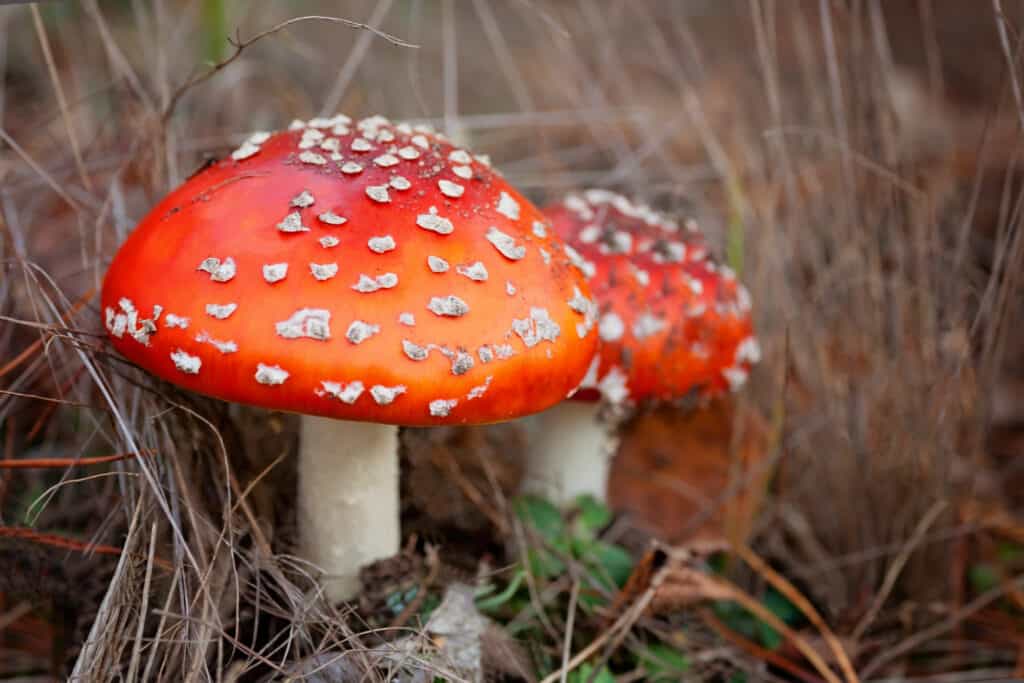
The fly agaric mushroom is commonly used to represent mushrooms in cartoons and video games.
©iStock.com/aletheia97
©iStock.com/aletheia97
Classified as Amanita muscaria, the fly agaric mushroom is probably what you picture when anyone says “toadstool”. With a wide cap that comes in yellow or red colors and white spots, fly agaric mushrooms are not edible and may even have some psychoactive qualities. While they are technically poisonous, deaths are rare with this particular mushroom. However, it’s best to leave these toadstools alone and observe them for their aesthetic qualities rather than their culinary ones!
Editor’s Note: While A-Z Animals does its best to ensure the accuracy of its content and photography, do not eat wild mushrooms without firsthand knowledge from a local mycologist or mushroom expert as many types of mushrooms look similar.
Up Next
- Discover 10+ Different Types of Wild, Edible Mushrooms
- 8 Different Types of Poisonous Mushrooms You Should Avoid
The photo featured at the top of this post is © Stephen Gibson/Shutterstock.com
The information presented on or through the Website is made available solely for general informational purposes. We do not warrant the accuracy, completeness, or usefulness of this information. Any reliance you place on such information is strictly at your own risk. We disclaim all liability and responsibility arising from any reliance placed on such materials by you or any other visitor to the Website, or by anyone who may be informed of any of its contents. None of the statements or claims on the Website should be taken as medical advice, health advice, or as confirmation that a plant, fungus, or other item is safe for consumption or will provide any health benefits. Anyone considering the health benefits of particular plant, fungus, or other item should first consult with a doctor or other medical professional. The statements made within this Website have not been evaluated by the Food and Drug Administration. These statements are not intended to diagnose, treat, cure or prevent any disease.
Sources
- Aerodynamics of puffball mushroom spore dispersal, Available here: https://ui.adsabs.harvard.edu/abs/2012APS..DFDE17004A/abstract
- Artificial cultivation of true morels: current state, issues and perspectives, Available here: https://www.tandfonline.com/doi/abs/10.1080/07388551.2017.1333082
- Mushrooms: the extent of the unexplored potential, Available here: https://www.dl.begellhouse.com/journals/708ae68d64b17c52,4cf0547d63409c36,503a72d82b669af6.html
Thank you for reading! Have some feedback for us? Contact the AZ Animals editorial team.



